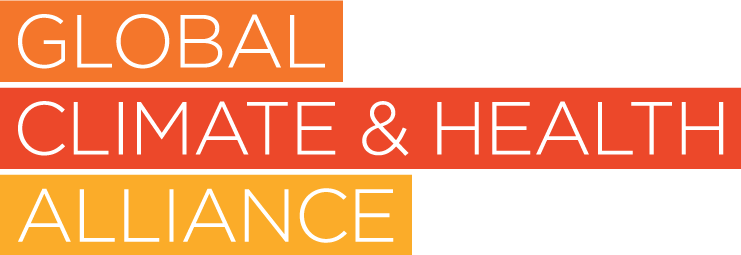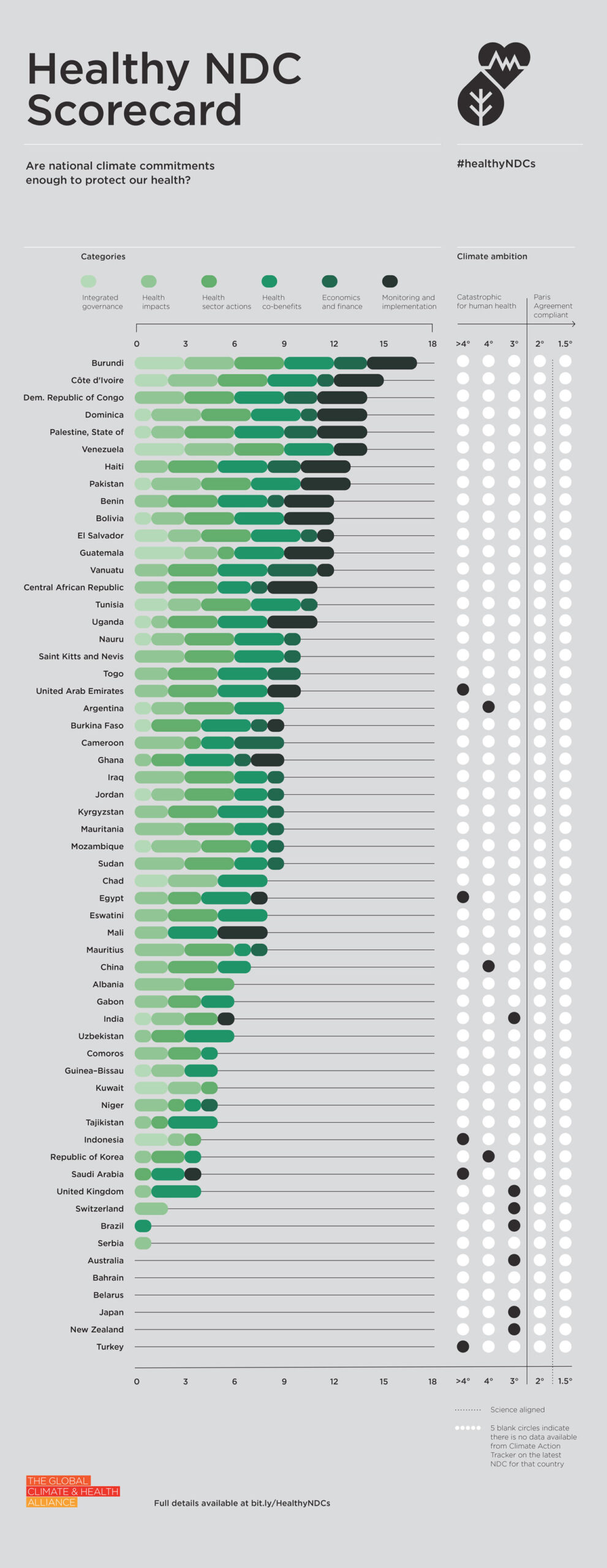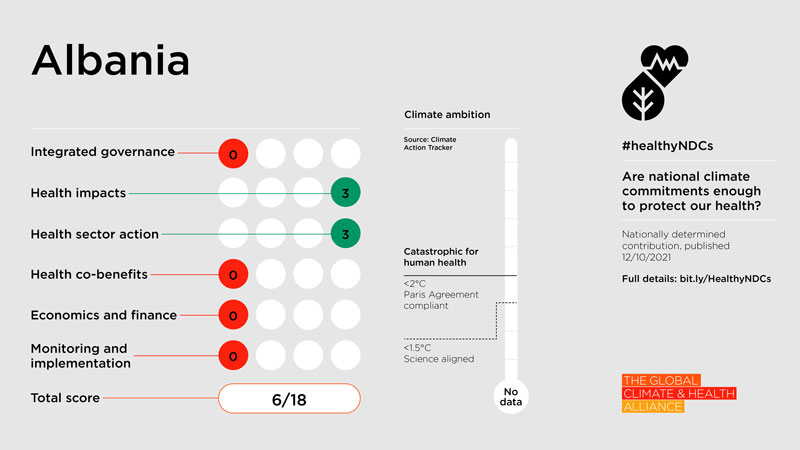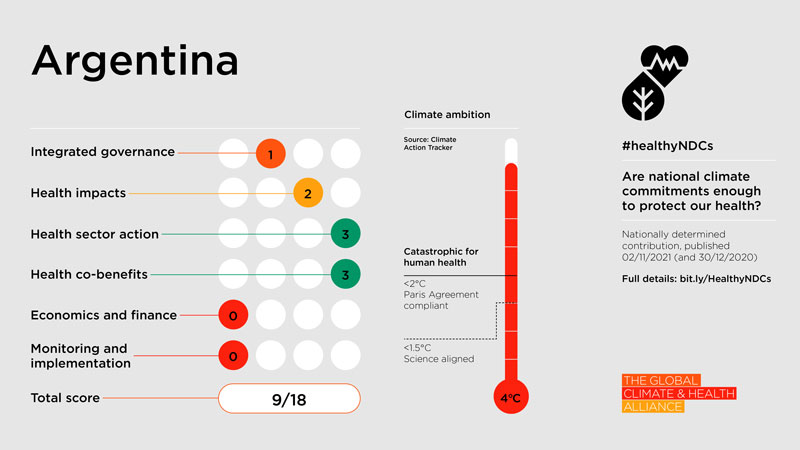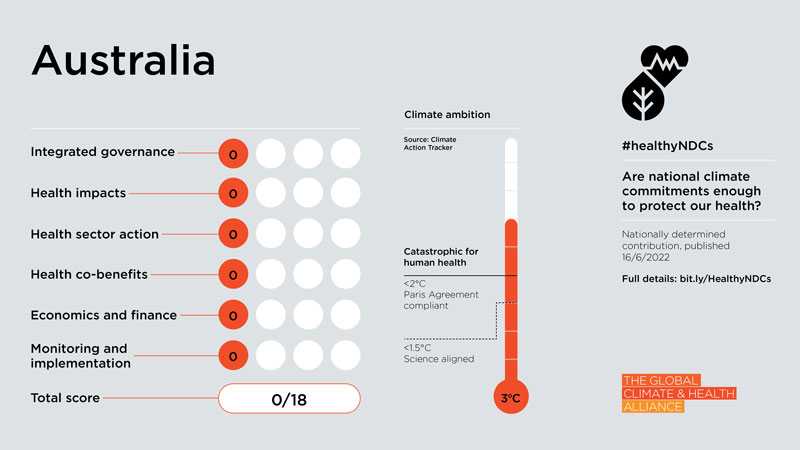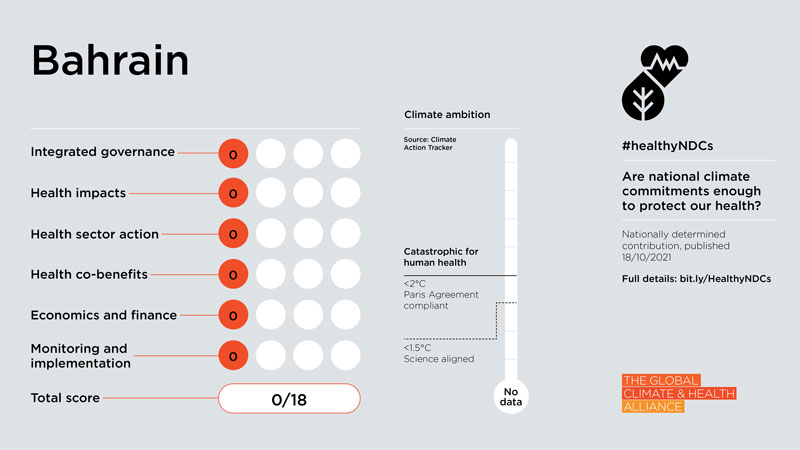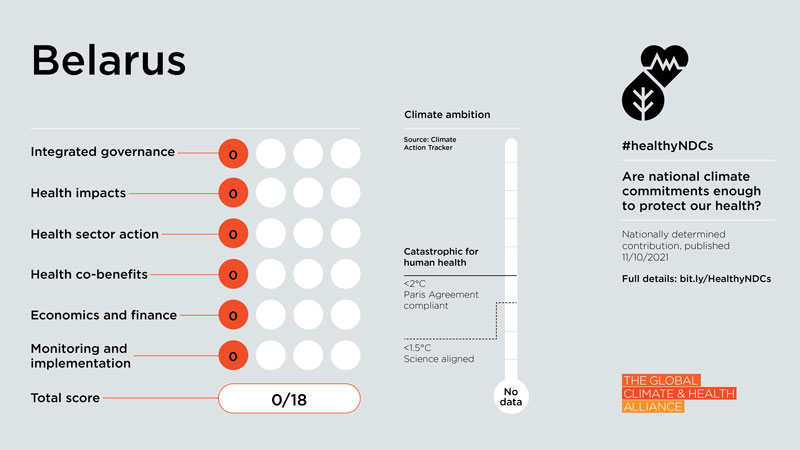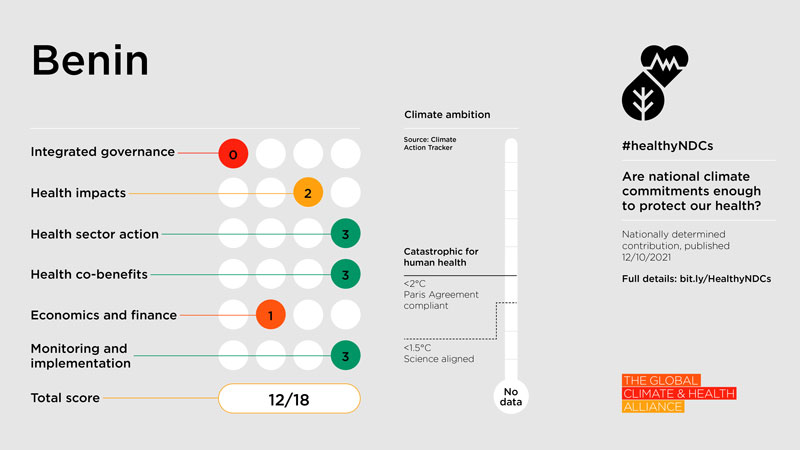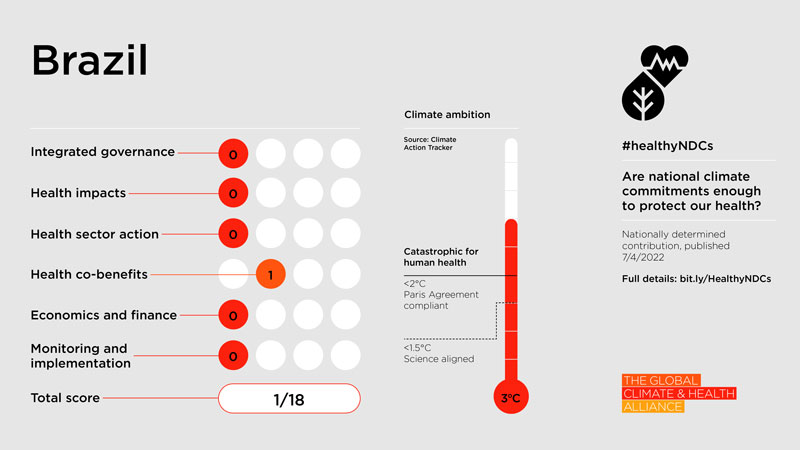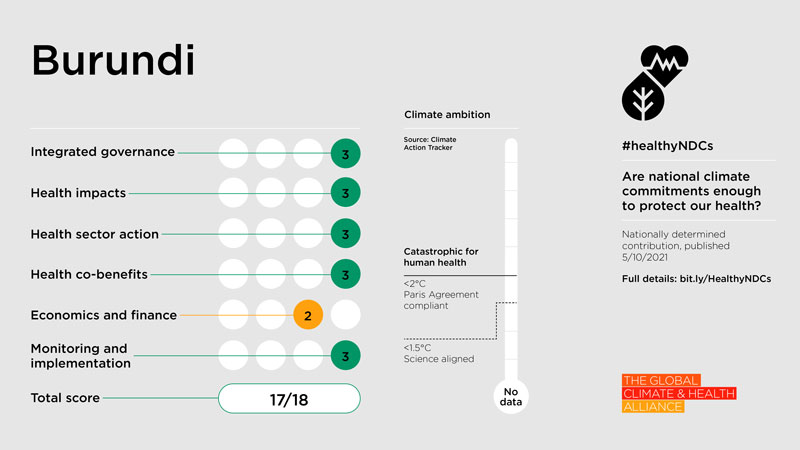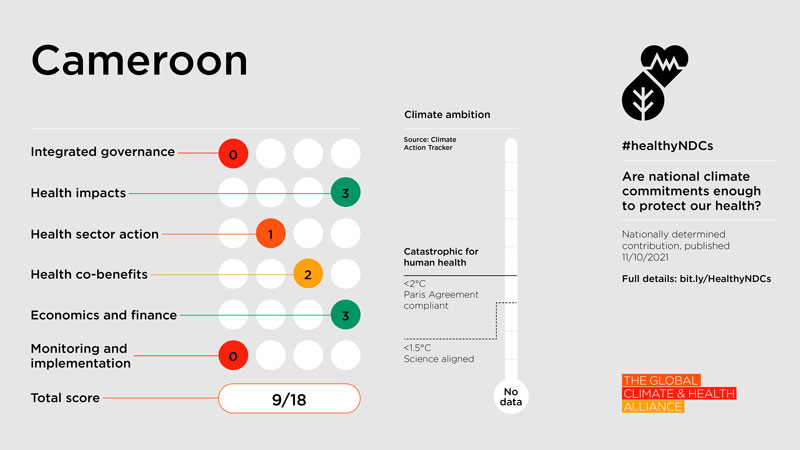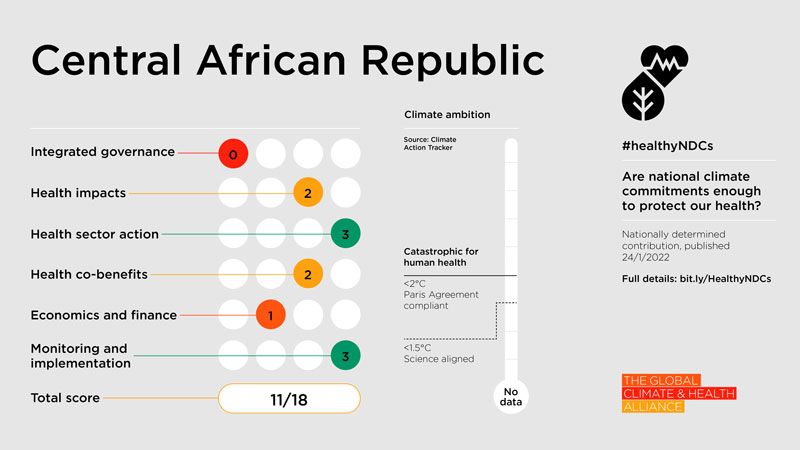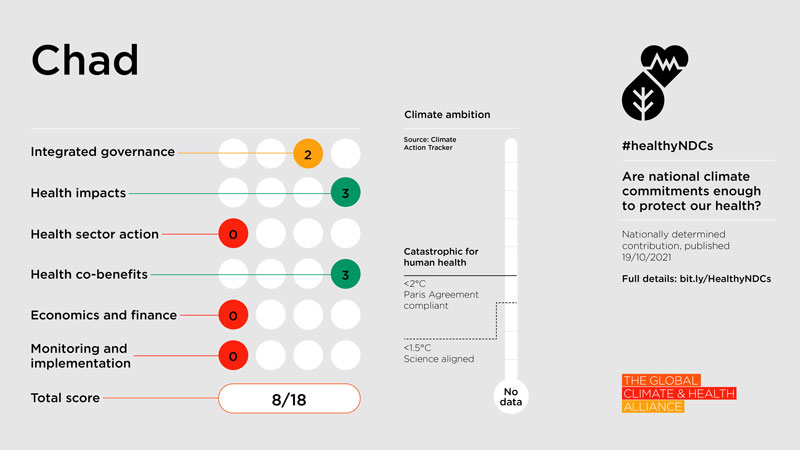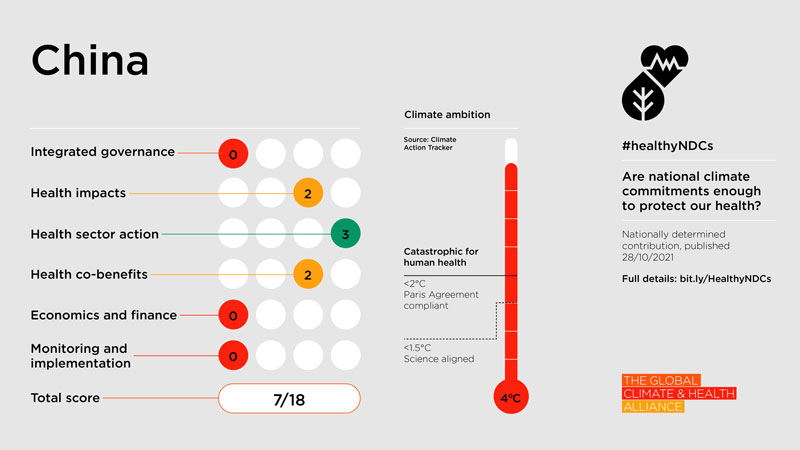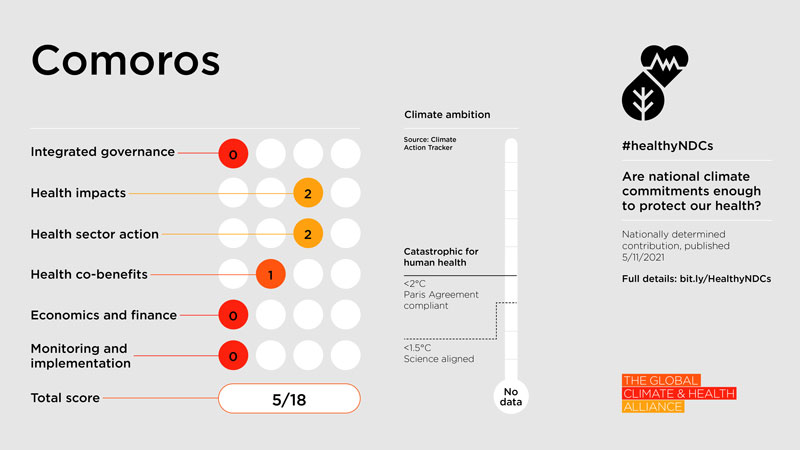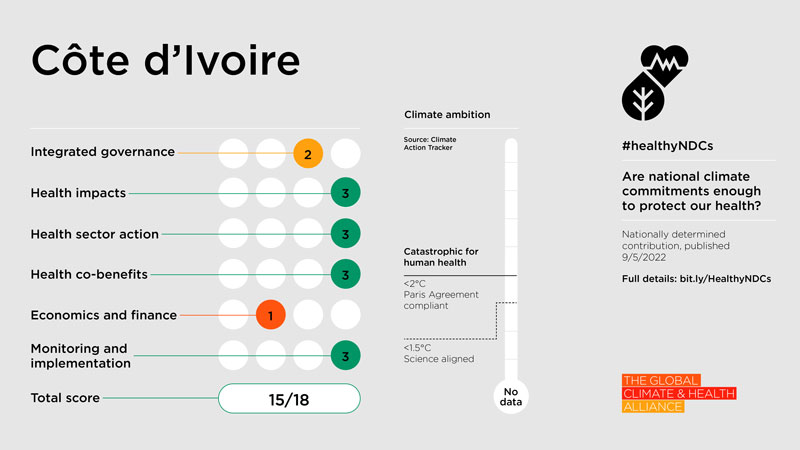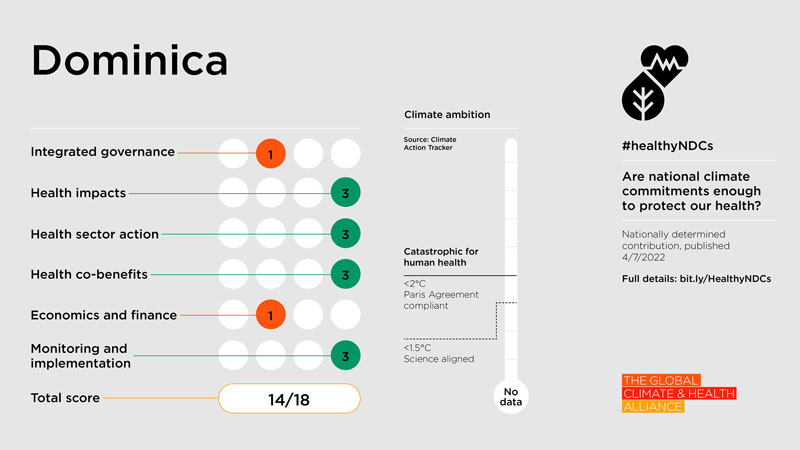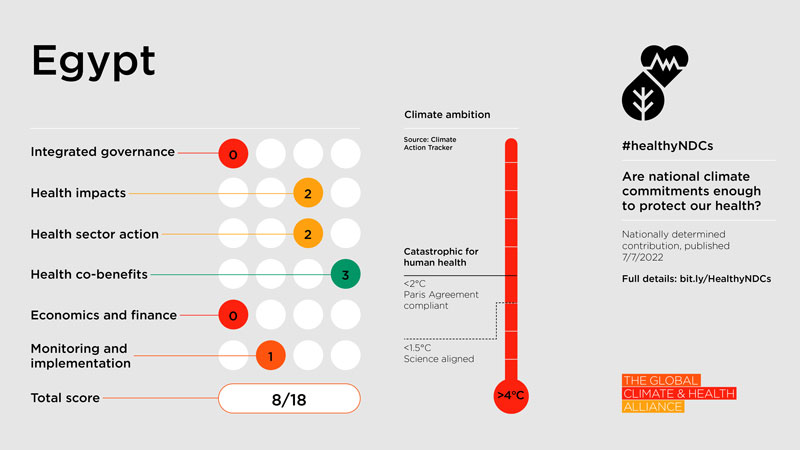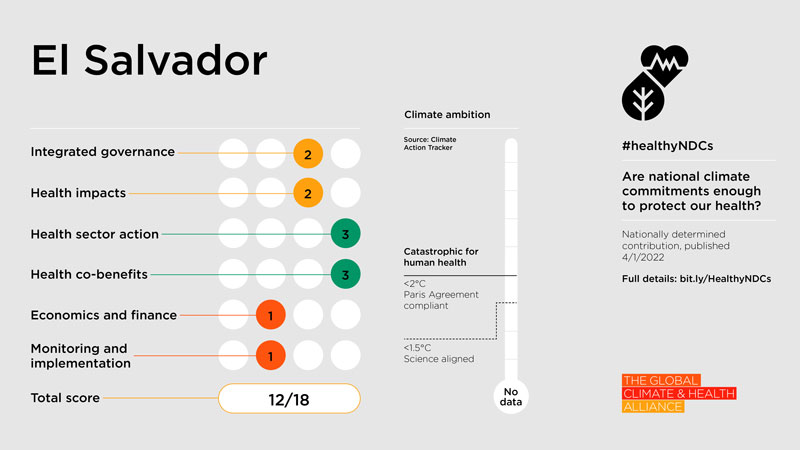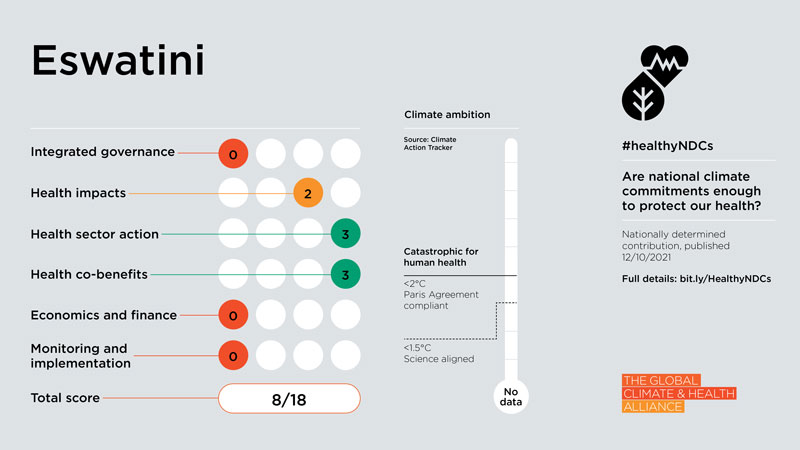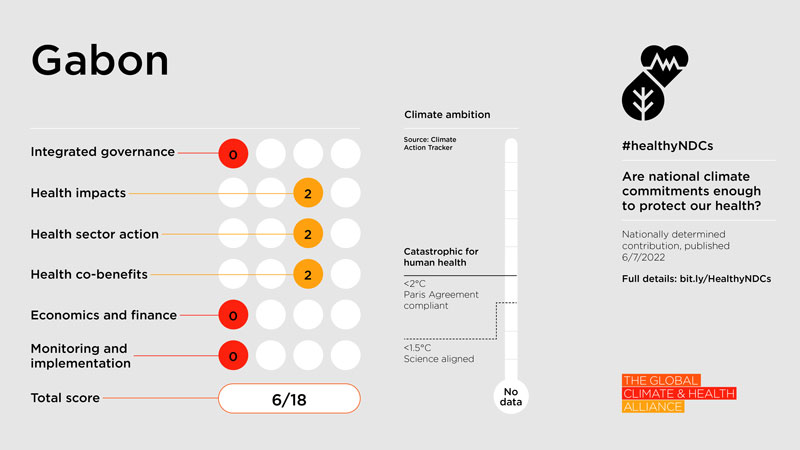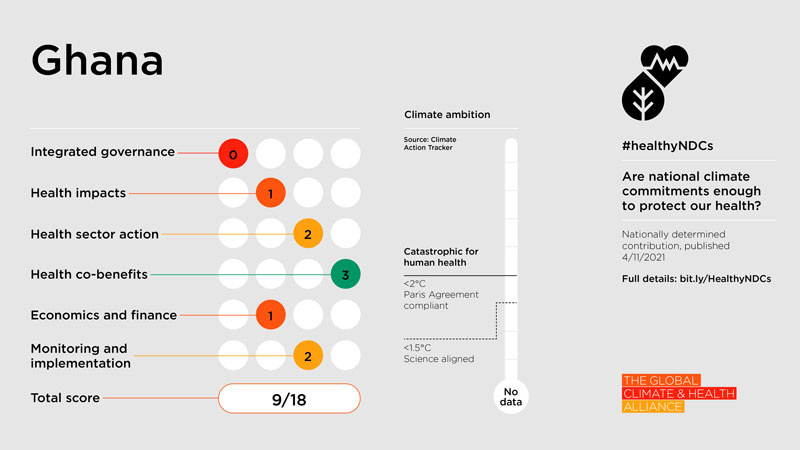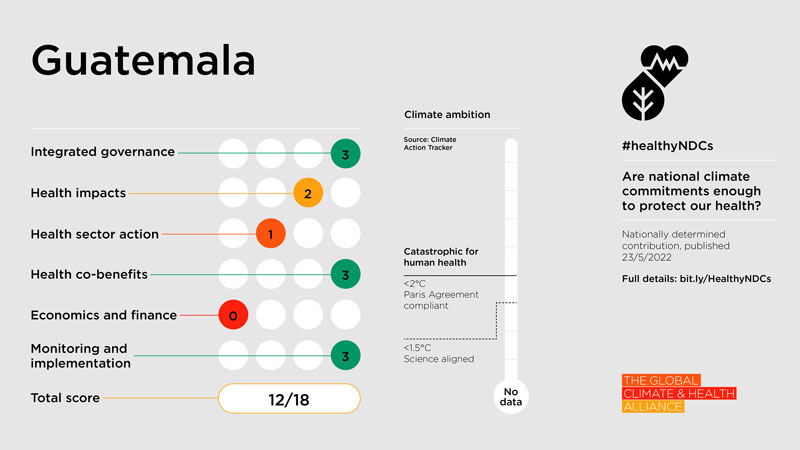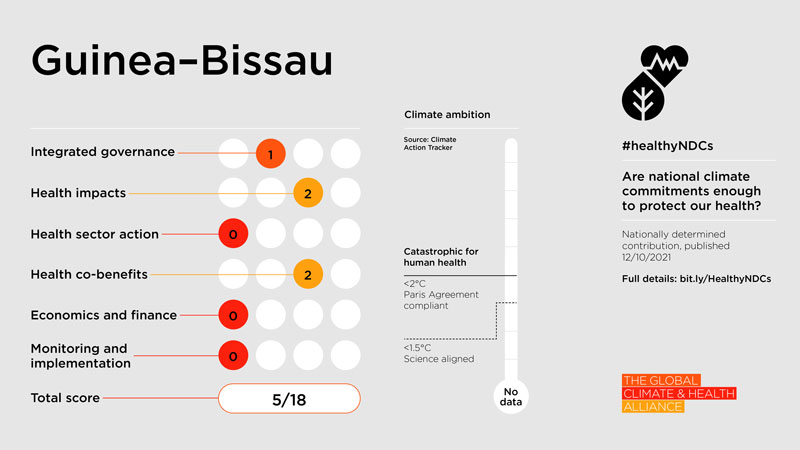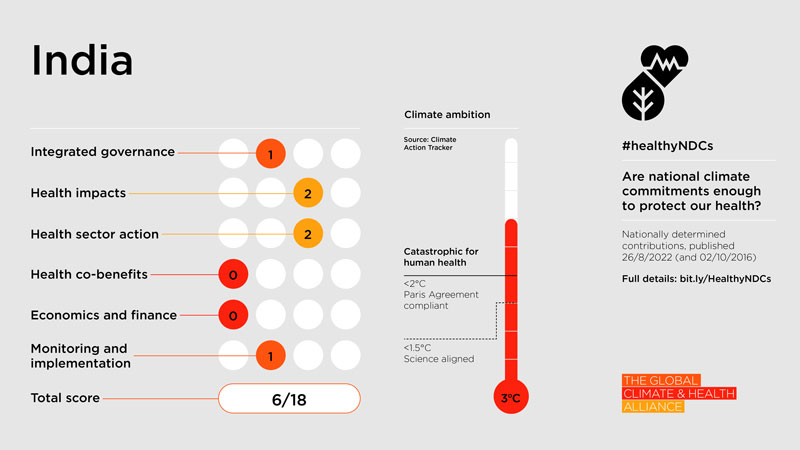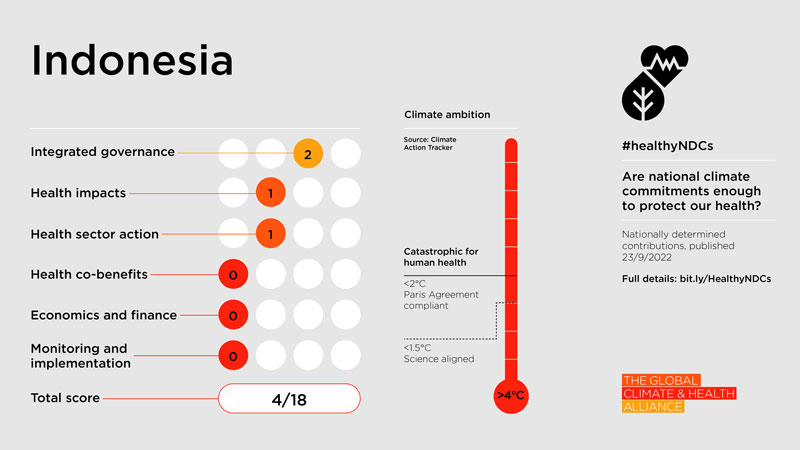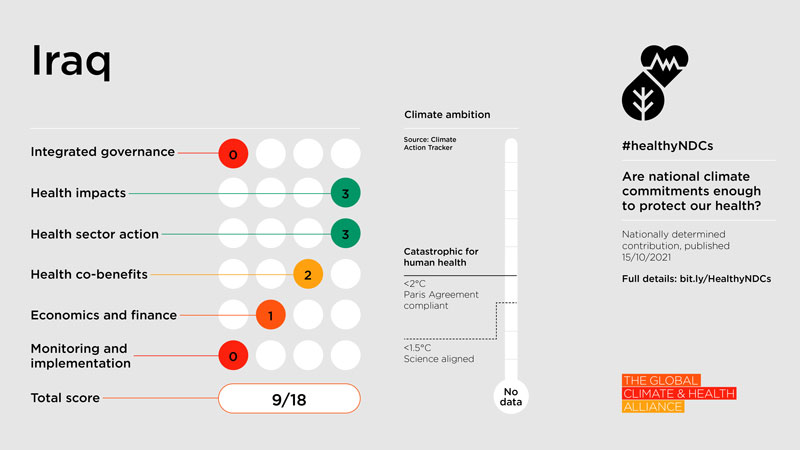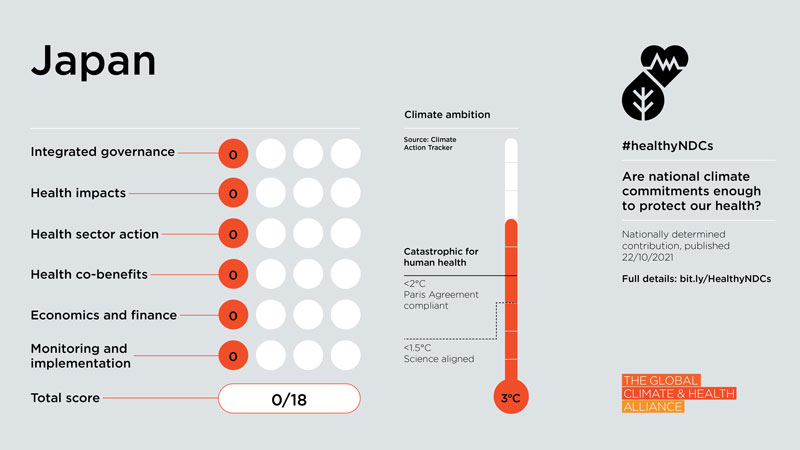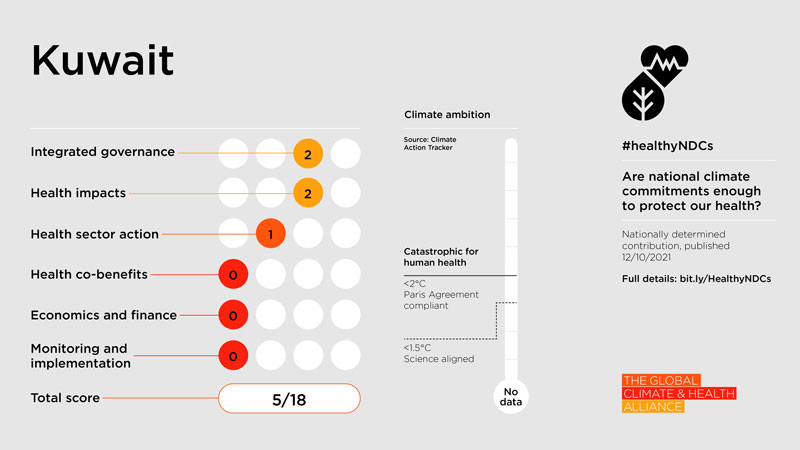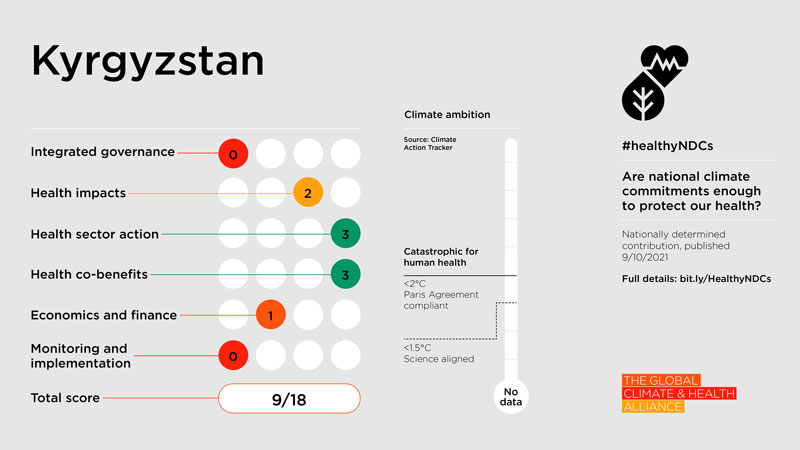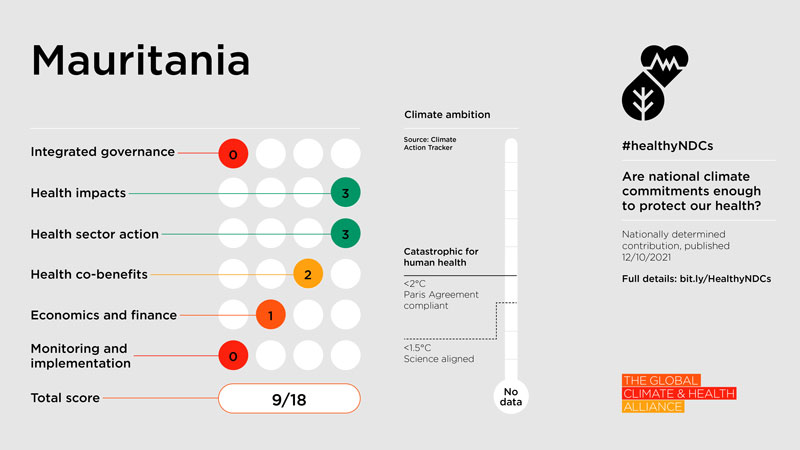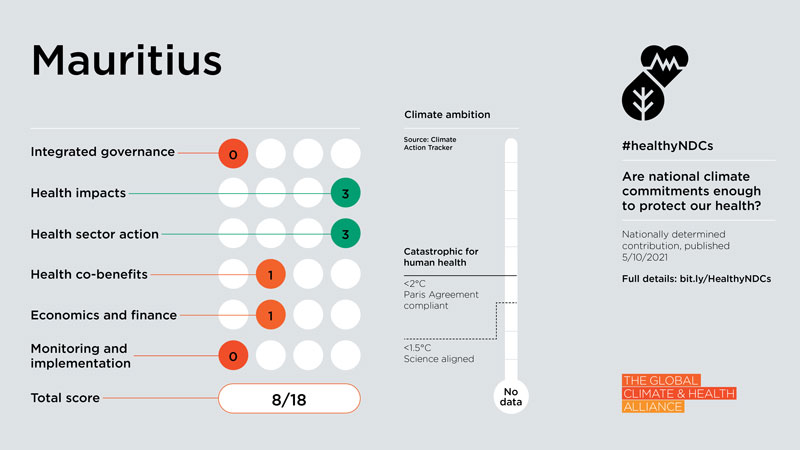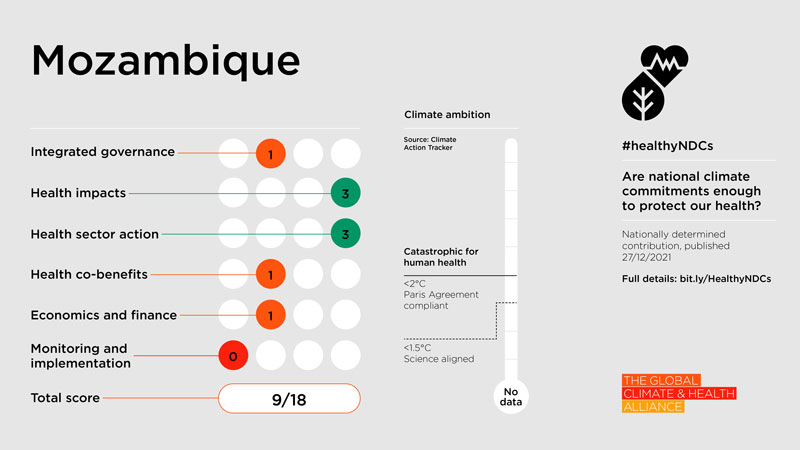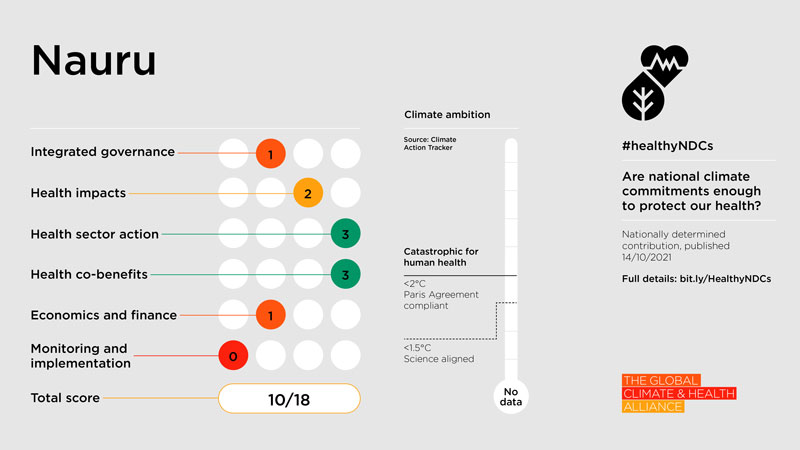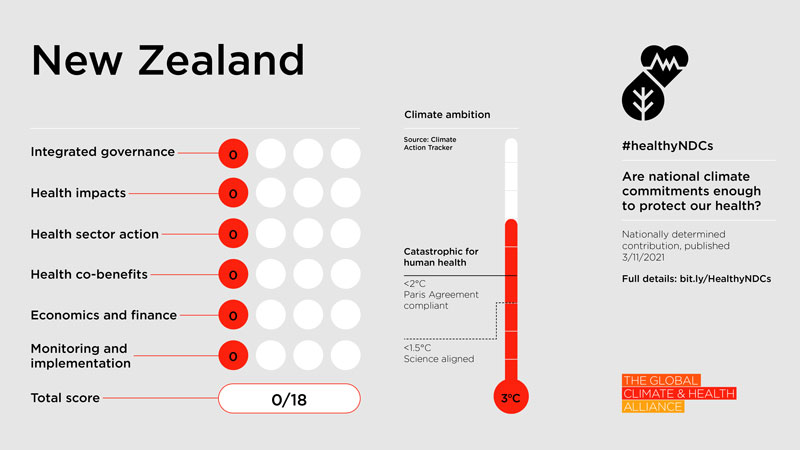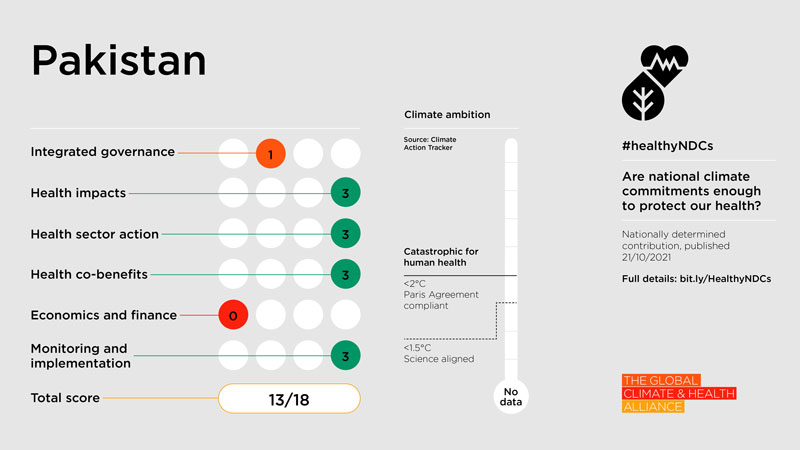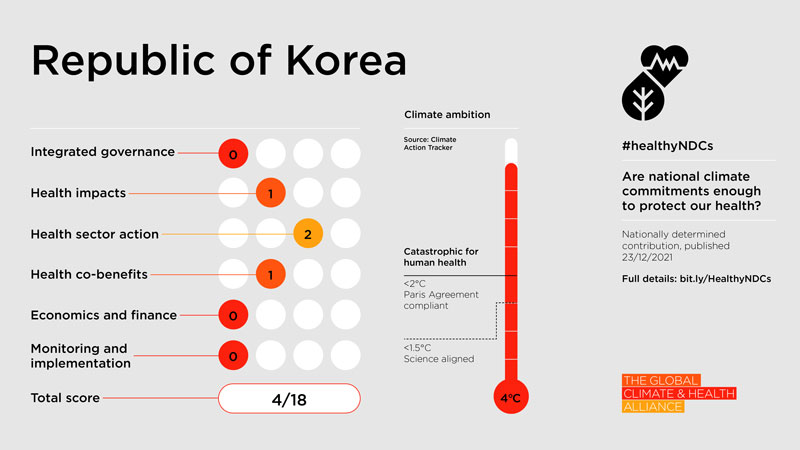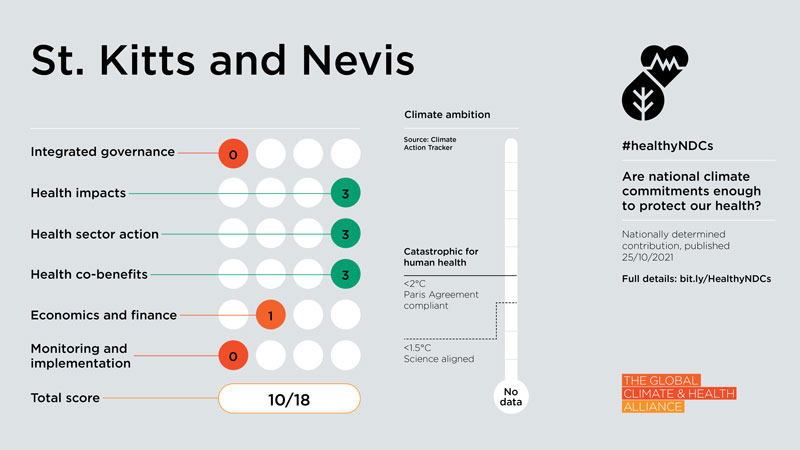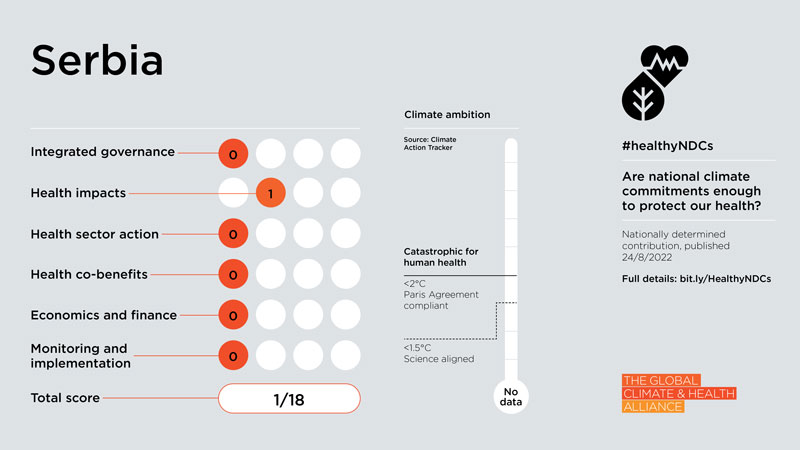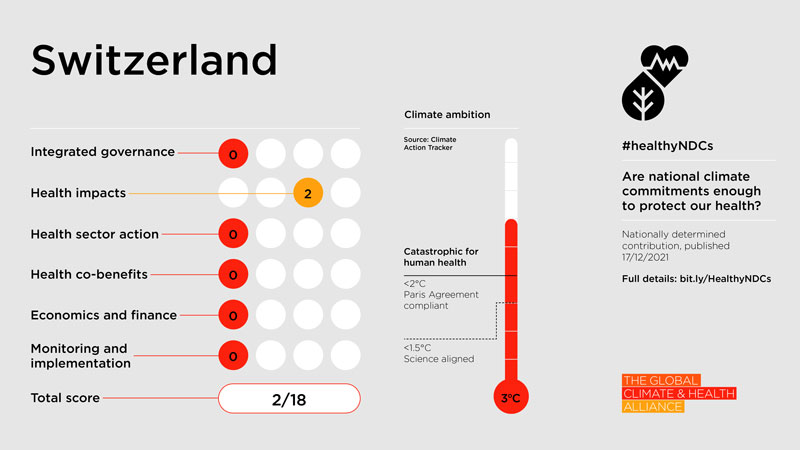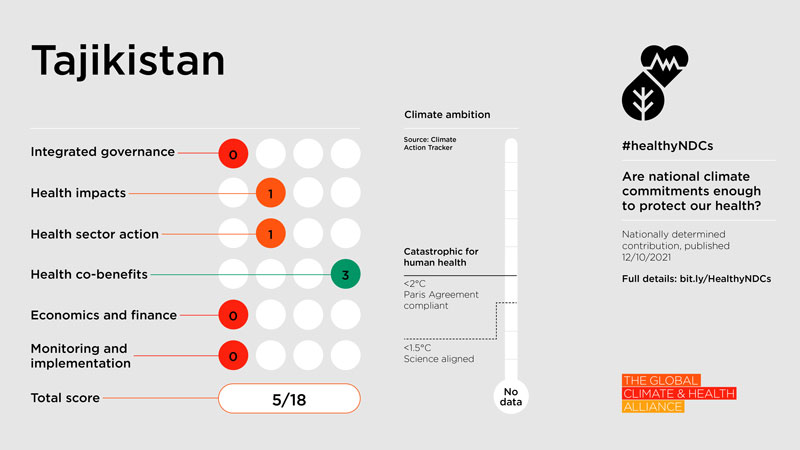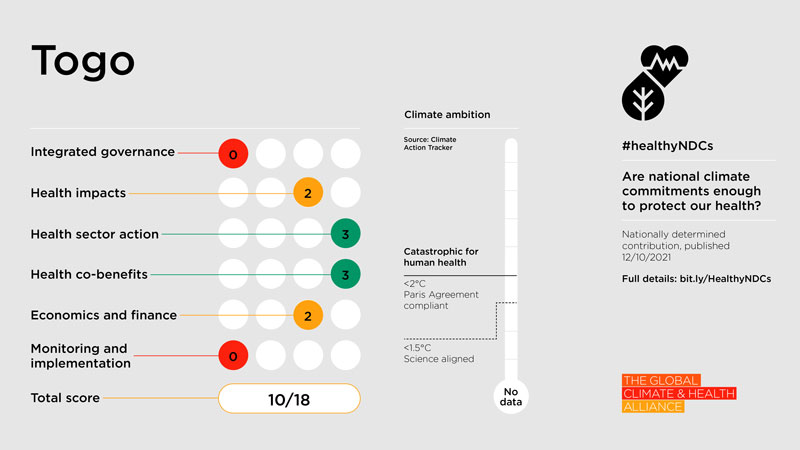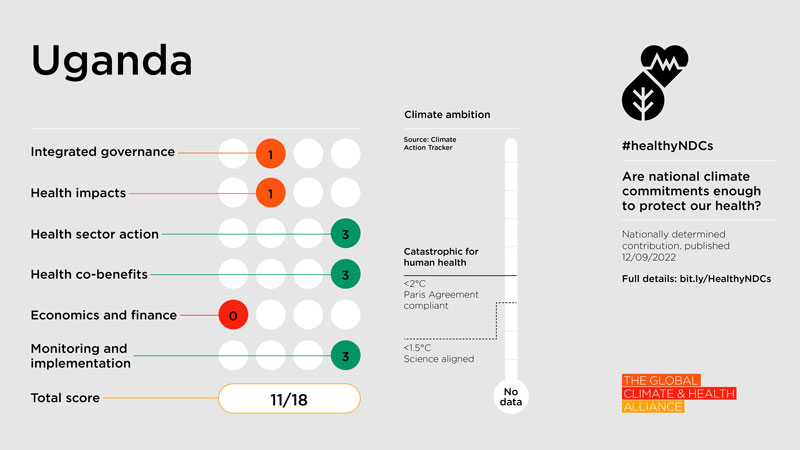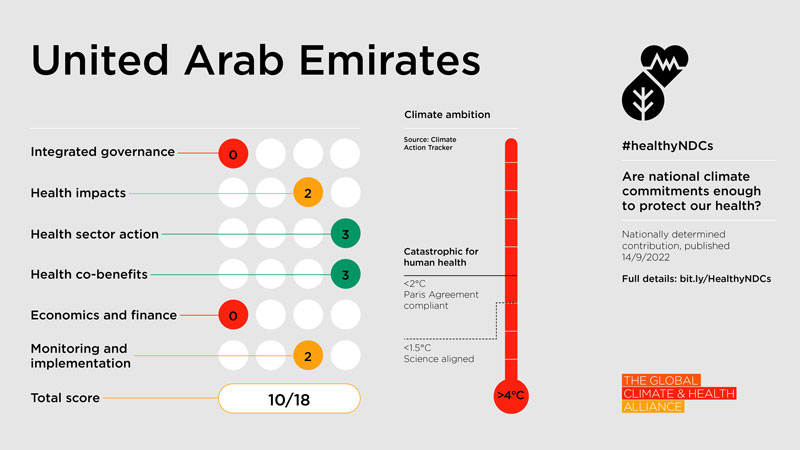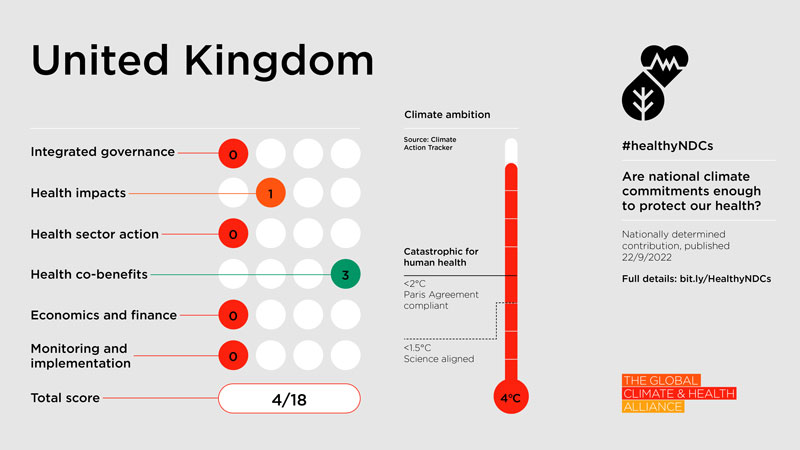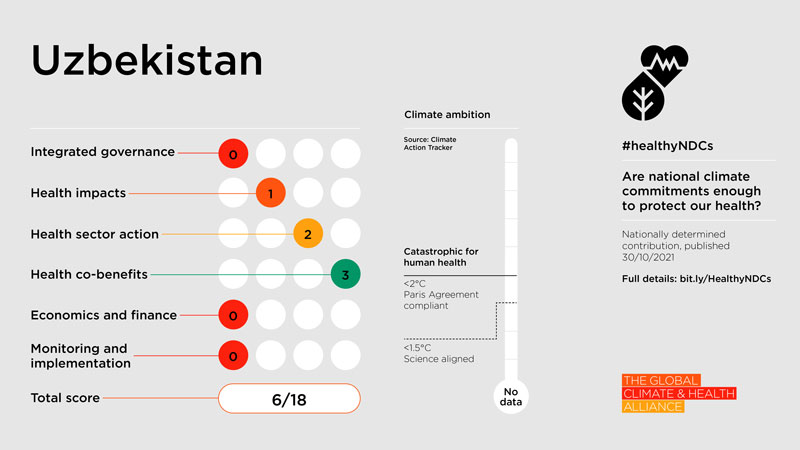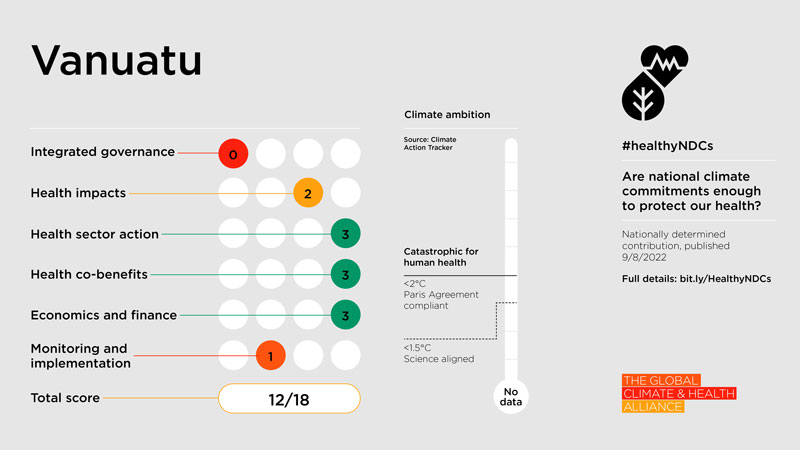2023 Healthy NDC Scorecard
Nationally Determined Contributions (NDCs) are country commitments to deliver the goal of the Paris Agreement, limiting global temperature rise to well below 2C, and preferably to 1.5C. The 2023 edition of the Healthy NDC Scorecard assesses the consideration of health in the 58 NDCs submitted between 1st October 2021 and 23rd September 2022. Details of the 2021 edition of the Healthy NDC Scorecard can be found here.
The GCHA Healthy NDCs Scorecard assesses the extent to which governments’ national climate commitments recognise and respond to the abundant linkages with health. Ensuring the integration of health into climate policy protects populations, maximises economic benefits, and builds public backing for ambitious climate policies which are so urgently needed. Failure to include health in NDCs is a missed opportunity for people, the public purse, and political support.
NDCs were assessed based on their attention to six health categories: integrated governance, health impacts, health sector action, health co-benefits, economics and finance, and monitoring and implementation. Three points were available for each category, with a total possible ‘health score’ of 18. In addition, where available, the scorecard also includes information on governments’ overall climate ambition, reflecting the most recent analysis of Climate Action Tracker. Full details of the methodology can be in the 2023 report, including on updates since the 2021 analysis, are accessible here.
Read the press release here: Healthy NDC Scorecard: As ‘Health COP’ Approaches, Analysis Shows Big Emitting Nations Doing Too Little to Protect Health from Climate Change
GCHA is extremely grateful to Iris Blom, Emaline Laney, Juliette Mattijsen, and Blanca Paniello Castillo for their collaboration in developing the methodology and for carrying out the analysis for this project. If you have any questions about this work, please contact Jess Beagley at [email protected].
Ranking and Implications for UNFCCC Policymaking
The vast majority of NDCs analysed (90%) refer to health and climate linkages to some extent. Leading health scores were secured by Burundi (17 points) and Côte d’Ivoire (15 points), closely followed by the Democratic Republic of the Congo, Dominica, State of Palestine, and Venezuela (all with 14 points). Notably, out of the 16 countries scoring 11/18 or above for inclusion of health, all were low- and middle- income countries. Meanwhile, Australia, Japan, and New Zealand were among the countries which scored zero for inclusion of health.
Of all UNFCCC Regions, the highest average scores were achieved by Parties from the United Nations Latin America and Caribbean Region (10.2 points), followed by Parties from the Africa region (9.4 points), Asia-Pacific (6.3 points), Eastern Europe (2.3 points), and Western Europe and Others Group (1.2 points).
There is a mismatch between the focus on health in NDCs and the climate ambition of many Parties: increased recognition of health does not necessarily translate to increased climate action. Notably, G20 countries Indonesia, Saudi Arabia, Turkey, outgoing COP Presidency Egypt and incoming COP Presidency the UAE, were assessed by Climate Action Tracker as having emissions reductions targets in line with >4°C temperature rise – a level of warming which would far exceed the limits of adaptation, and be catastrophic for human health. This is inconsistent with the mentions of health and climate links made in the NDCs of Egypt and the UAE, which secured health scores of 8 and 10 points respectively.
With regards to UNFCCC policymaking, the recommendations of the Global Stocktake, which will inform the development of the next round of NDCs, should include guidance for integrating health into NDCs to maximize benefits for people and the planet. The widespread recognition of the health impacts of climate change by countries make the case for the need for health to be elevated within UNFCCC discussions on loss and damage. Similarly, the elaboration of adaptation actions in the health sector, as well as reference to the recognition of health co-benefits of adaptation in other sectors, show the relevance of greater consideration of health and wellbeing within discussions on the Global Goal on Adaptation. The mismatch between recognition of health and climate linkages but low levels of mitigation ambition could be improved by embedding health in the UNFCCC Mitigation Work Programme. Finance is essential for action to be taken, but both climate change finance and health finance are stretched thin. Integrated health and climate projects may help to make the best use of available funds by maximising co-benefits.
Further discussion of the scores can be found in the report.
Country scorecards can be downloaded in multiple languages here. Please share them on social media, using the hashtag #HealthyNDCs
A wide variety of health threats are identified in Albania’s NDC, including water-borne and vector-borne diseases, mental health impacts, respiratory and cardiovascular diseases due to deteriorating air quality, deaths from heatwaves and injuries from floods and other extreme weather events, wildfires, and damage to healthcare infrastructure. The number of people affected by different hazards are quantified. With regard to health sector action, a vulnerability and adaptation assessment has been drafted, and actions planned by the health sector include research and monitoring of vector-borne diseases and capacity building to address health impacts, “climate proofing” of health facilities, and limiting incineration of clinical waste.
Argentina’s 2021 submission states clearly that the purpose of the document is to update the emissions target, and that the 2020 NDC is otherwise unchanged. As such, the 2020 NDC was analysed to give the health score, and the CAT assessment of the 2021 NDC was used for the climate score. The 2020 NDC takes an integrated approach to health in its NDC, taking health as one of 15 principles guiding the design, implementation, and monitoring of all national adaptation and mitigation actions, and recognises that “the pandemic has forced us to reflect on the importance of human health and its interrelation with the health of the planet”. Health impacts include the between climate change and zoonotic and vector-borne diseases, and contamination of drinking water. According to the NDC, in terms of health sector action, impact scenarios have been assessed, and by 2030, policies, measures, and actions will have been implemented to provide a timely response to the new emerging epidemiological profiles of environmental and climatic changes, while guaranteeing the operation of the health system. Early Warning Systems will have been strengthened for events that have an impact on health, and climate-sensitive diseases that expand their geographical border will be addressed. Greenhouse gas emissions generated by healthcare establishments will be reduced. A dedicated health and climate action plan, the Plan de Acción Nacional de Salud y Cambio Climático (PANSyCC), was published in 2019. Beyond the health sector, the NDC includes the health of workers when defining a just transition, and health co-benefits of action relating to agriculture, energy, gender, nature-based solutions, transport and water are mentioned. Despite its improved emissions reduction target, Argentina’s 2021 NDC is in line with up to 4°C global temperature rise, which would be catastrophic for human health.
Australia’s 2022 NDC includes no mention of health and climate linkages, but its updated emissions target will contribute to the protection of human health, although it is assessed by CAT as being in line with up to 3°C of warming and is thus not yet compliant with the Paris Agreement. The 2022 NDC was submitted shortly after the start of the Albanese government. The updated emissions target was an urgent priority, but can be further strengthened. In the next NDC, recognition of the health and climate links, which will be addressed in Australia’s national climate and health strategy currently under development, could be integrated into the NDC to embed health across national climate action.
air pollutants in addition to GHGs as Côte d’Ivoire implements its NDC, the effects of improving
indoor and outdoor air quality have been estimated at about 7,000 premature deaths averted per year in 2030, thus considerably improving public health. Health co-benefits in the energy, transport, and waste sectors are mentioned, with specified targets. Health sector action is included in the adaptation budget.
As the Presidency of COP27, Egypt recognises in its NDC that severe storms and other extreme weather events that have increased significantly in Egypt over the last ten years, inducing casualties and economic losses, as well as heat stress presenting challenges within cities. Egypt seeks to develop weather forecast and early warning systems to provide citizens with information for time-sensitive actions to reduce injury, sickness, and deaths, and to raise the efficiency of the health care sector to deal with climate change and increase awareness on pro-active health measures to limit risks and confronting crises and disasters on both political and community levels. Health co-benefits are alluded to from climate action in the infrastructure, nature-based solutions, and water sectors. In order to meet demands for drinking water, Egypt targets a total design capacity of 4 million m3 daily for water desalination. Despite securing 8 points for health, Egypt’s NDC is in line with >4°C of warming.
waves, changes in intra- and inter-annual precipitation patterns, including rainfall variability, and the incidence of extreme wet and dry hydrometeorological events, influencing the spread of insect disease vectors. El Salvador plans to improve epidemiological surveillance of climate-sensitive diseases, (especially arbovirosis), and to develop a model for nutrition surveillance for populations affected or at risk of climate-related threats. The NDC refers to identification of technological changes in hospitals that allow significant reductions in energy consumption and mitigation of greenhouse gases.The NDC notes links between SDG3 and action in across the agriculture, buildings, city, energy, transport, waste and water sectors. A budget is included to address epidemics. Monitoring is planned for health related water and sanitation measures.
View the Press Release
Press enquiries to Dave Walsh: [email protected]
